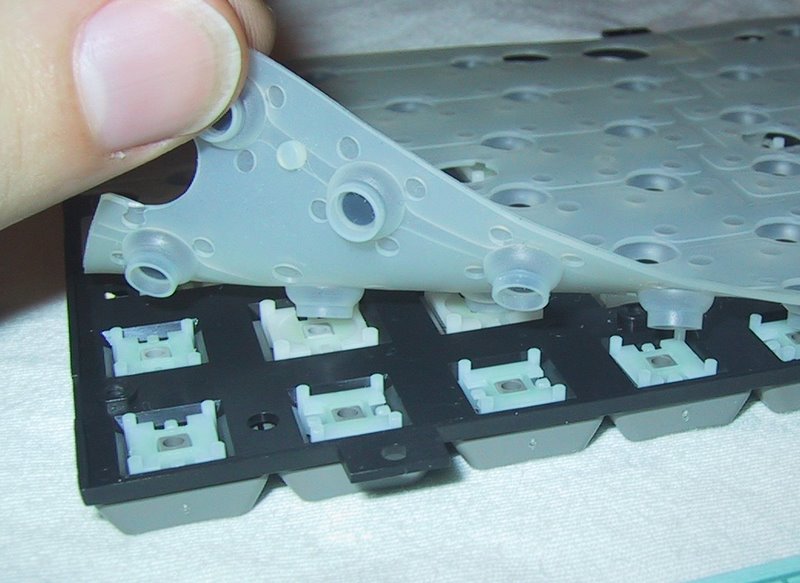How a Membrane Switch Enhances Individual Experience and Gadget Effectiveness
How a Membrane Switch Enhances Individual Experience and Gadget Effectiveness
Blog Article
Understanding the Capability of Membrane Switches Over for Interface Instruments
The capability of membrane layer switches stands for a substantial advancement in customer interface design, integrating efficiency with aesthetic convenience. These buttons operate through a multi-layered framework that translates individual communications into electric signals, permitting both portable formats and durability against ecological factors. As industries progressively focus on customer experience, recognizing the subtleties of membrane button technology comes to be vital. What effects do these developments hold for future applications, and exactly how might they redefine individual interactions throughout numerous tools?
What Are Membrane Layer Buttons?
Membrane layer buttons are cutting-edge user interface devices that promote customer interaction with digital devices. These flexible parts include several layers, consisting of a visuals overlay, spacer, and a published circuit layer. The style enables for a seamless assimilation right into different electronic devices, enhancing both the visual and useful elements of interface.
Membrane buttons are frequently employed in a wide variety of applications, from home appliances to industrial equipment and medical devices. Their building normally includes a thin profile, making them an optimal choice for small designs. The responsive feedback supplied by these switches can be crafted to meet certain customer preferences, ensuring reliable interaction in between the individual and the device.
Durability is an additional substantial benefit of membrane buttons, as they are immune to dirt, wetness, and chemicals, which enhances their life-span in demanding settings. Additionally, these buttons can be customized in regards to shape, size, and visuals design, enabling branding and user-specific features. On the whole, membrane layer changes stand for a functional service for boosting customer experience in electronic devices, integrating capability with aesthetic charm in a reliable manner.
How Membrane Switches Over Job
Operating on a simple concept, membrane layer switches utilize a layered construction to register individual input successfully. Each button consists of numerous layers, including a published circuit layer, a spacer layer, and a leading graphic layer, which are developed to collaborate flawlessly. When a user presses the leading layer, it compresses the spacer layer, bringing the conductive aspects of the circuit layer into call with each various other.
This contact creates a shut circuit, signifying the tool to execute a certain function. The design permits various configurations, consisting of tactile responses, which can enhance the user experience by supplying a physical experience upon activation. The products utilized in membrane switches often consist of adaptable substrates, such as polyester or polycarbonate, which ensure durability and resilience versus deterioration.

Trick Benefits of Membrane Switches

Another substantial advantage is their density. Membrane buttons are thin and light-weight, which allows producers to conserve area in their devices without compromising functionality. This attribute is especially advantageous in applications where weight and quantity are crucial factors to consider.
Furthermore, membrane layer switches are resistant to dirt, wetness, and chemicals, enhancing their longevity. This durability extends their lifespan and reduces the demand Extra resources for constant substitutes, causing expense savings gradually.
Furthermore, the responsive responses given by membrane buttons can be enhanced to boost user communication. They can include functions such as elevated buttons or distinct clicks, improving functionality and individual experience.
Applications Throughout Industries
User interface tools utilizing membrane buttons prevail in a large range of markets, showcasing their flexibility and functionality. Membrane Switch. In the medical market, membrane layer buttons are integral to gadgets such as analysis devices and individual surveillance systems, where their resilience and simplicity of cleaning are vital for keeping health criteria. In the auto industry, these buttons are used in control panel controls and infotainment systems, browse around this site offering a streamlined and modern-day user interface for customers.
Additionally, the customer electronics industry advantages from membrane layer switches in devices and portable gadgets, where compact design and straightforward interfaces enhance user experience. Industrial applications also leverage membrane switches for control board in machinery and automation systems, stressing their effectiveness and resistance to extreme atmospheres.
In the aerospace and defense industries, membrane switches are made use of in cabin controls and devices, where dependability and performance under severe problems are critical. Additionally, the gaming market progressively incorporates membrane layer switches in controllers and arcade machines, adding to an interesting customer experience. Generally, the adaptability of membrane switches enables their prevalent usage across numerous fields, emphasizing their relevance in contemporary interface layout.
Future Trends in Membrane Layer Change Innovation

Additionally, making use of innovative materials, such as polycarbonate and polyester films, is anticipated to climb, offering improved longevity and resistance to environmental stressors. These products add to the overall durability of membrane layer buttons, making them suitable for harsher industrial applications.
In addition, the unification of smart technology, including IoT connectivity, will certainly make it possible for membrane layer buttons to connect with various other tools and systems, helping with a much more interactive customer experience. This fad straightens with the expanding demand for wise gadgets across different markets, from medical care to customer electronic devices.
Last but not least, modification choices are expected to broaden, enabling makers to produce bespoke options customized to certain individual requirements and preferences. These developments will position membrane switches as essential components in the evolution of user interface modern technology.
Verdict
In verdict, membrane layer switches over stand for an essential improvement in individual interface technology, offering a dependable and versatile remedy for varied electronic applications. Their split building and construction assists in compact design, while functions such as tactile responses enhance customer communication. The resilience against ecological elements additionally solidifies their utility throughout several industries. As improvements in material science and touch noticing technologies proceed, the capability and applicability of membrane switches are expected to expand, reinforcing their significance in contemporary digital tools.
Report this page